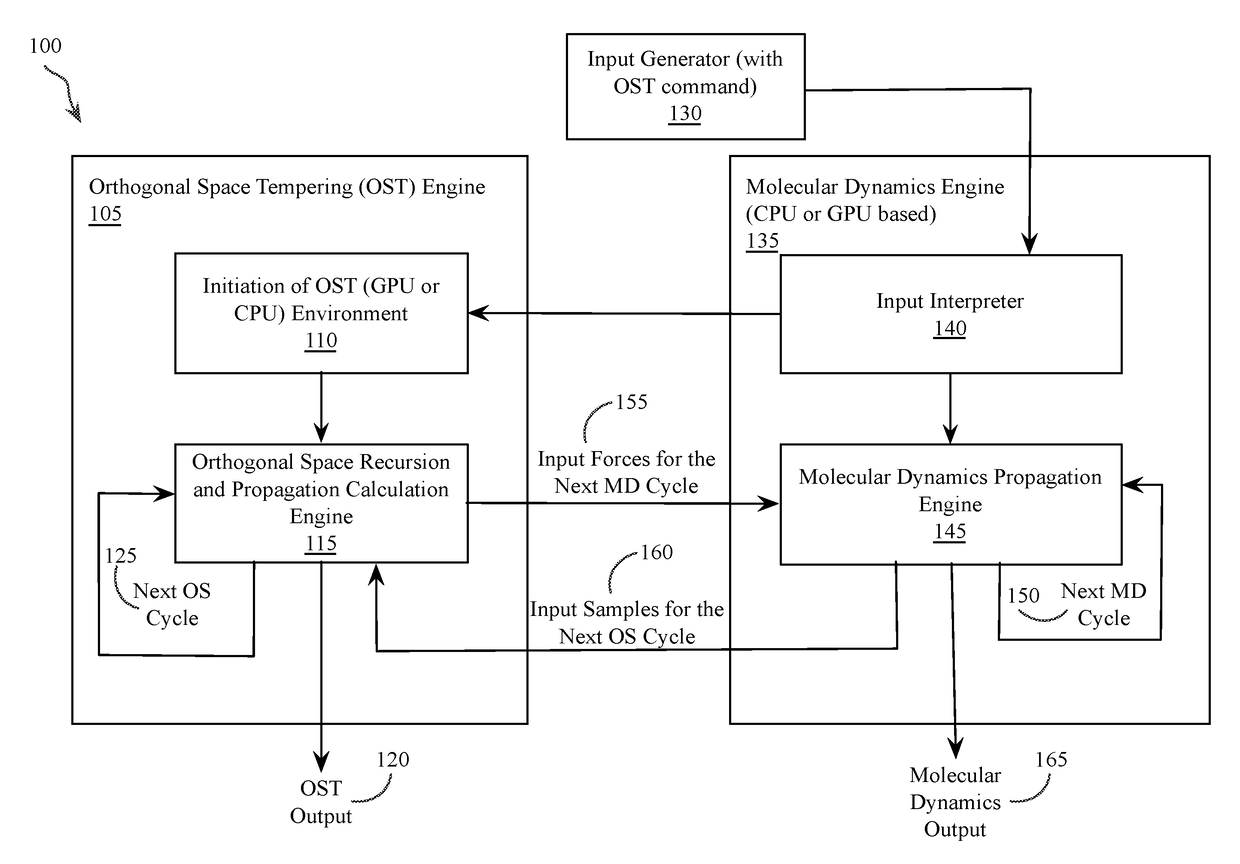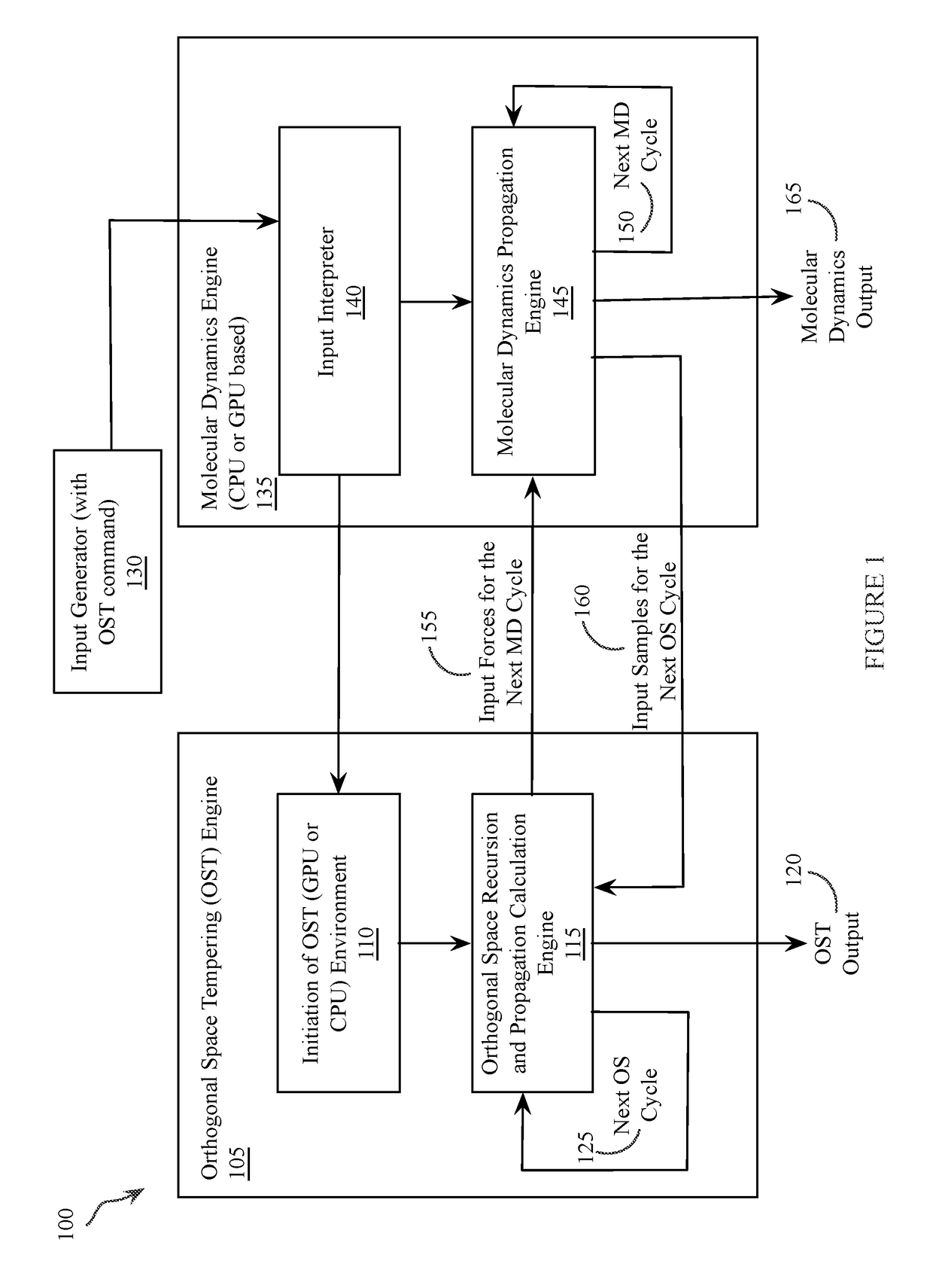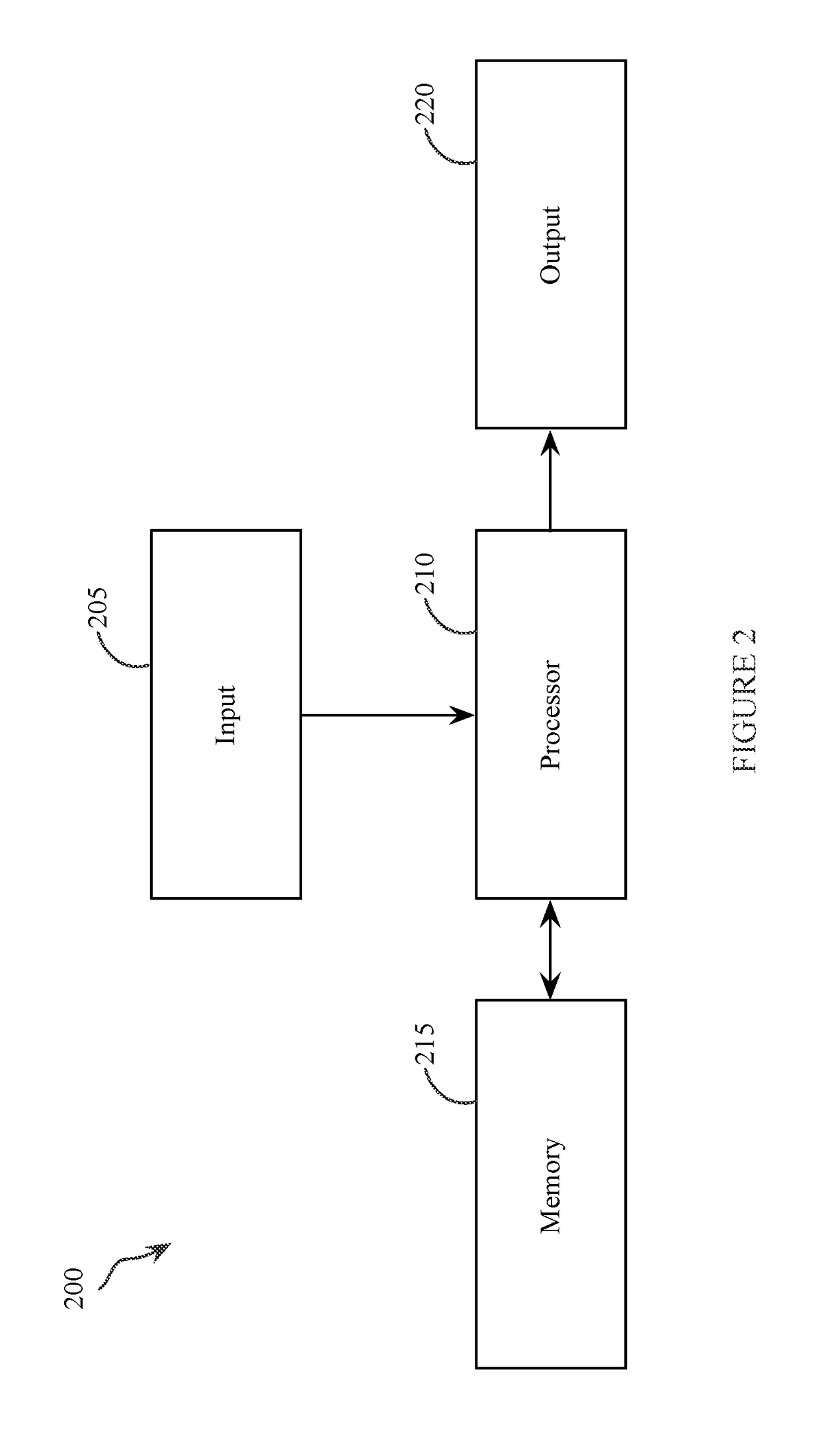Methods and apparatus for double-integration orthogonal space tempering
a technology of orthogonal space tempering and methods, applied in the field of mathematical simulations in molecular biology, can solve the problems of unsatisfactory performance of docking and scoring functions in this application, unsatisfactory consistency and accuracy of computation predictions for docking and scoring (molecules and proteins), and save researchers considerable time and expense. , to achieve the effect of efficient simulation prediction
- Summary
- Abstract
- Description
- Claims
- Application Information
AI Technical Summary
Benefits of technology
Problems solved by technology
Method used
Image
Examples
Embodiment Construction
[0040]The present invention is focused on alchemical free energy simulations, by which protein-ligand binding affinity changes, protein-protein binding affinity changes, solvation energies, pKa values, and other chemical state related thermodynamic properties can be predicted. The disclosed DI-OST algorithm is also applicable to the geometry-based potential of mean force calculations.
[0041]To carry out alchemical free energy calculations, as described in Equation (1), a scaling parameter λ needs to be introduced to connect two target chemical states. A simplest hybrid energy function is the linear form shown in Equation (4).
UO(λ)=(1−λ)USA+λUSB+Ue (4)
[0042]where USA and USB are the energy terms unique in the two end chemical states; Ue represents the common environment energy terms shared by the two end states. When dummy atoms are employed in one of the end states, soft-cores potentials are commonly applied to treat the van der Walls terms or / and the electrostatic terms in USA and...
PUM
 Login to View More
Login to View More Abstract
Description
Claims
Application Information
 Login to View More
Login to View More - R&D
- Intellectual Property
- Life Sciences
- Materials
- Tech Scout
- Unparalleled Data Quality
- Higher Quality Content
- 60% Fewer Hallucinations
Browse by: Latest US Patents, China's latest patents, Technical Efficacy Thesaurus, Application Domain, Technology Topic, Popular Technical Reports.
© 2025 PatSnap. All rights reserved.Legal|Privacy policy|Modern Slavery Act Transparency Statement|Sitemap|About US| Contact US: help@patsnap.com



